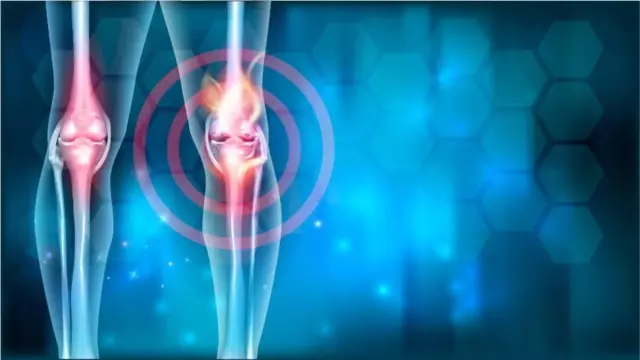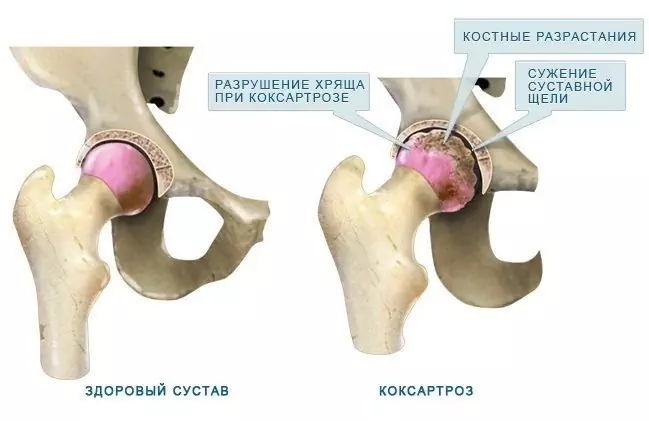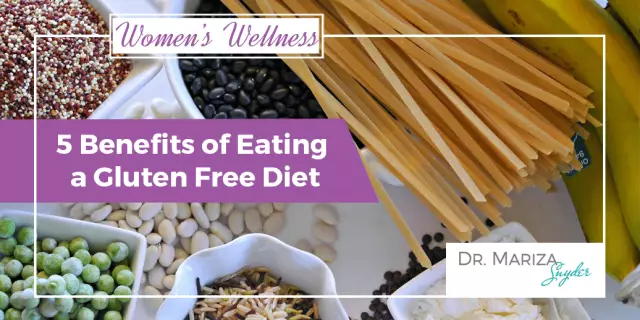- Author Rachel Wainwright [email protected].
- Public 2023-12-15 07:39.
- Last modified 2025-11-02 20:14.
Diet for arthrosis

Diet for arthrosis of the joints is a specially designed nutritional system that allows you to improve the condition of the joints and reduce the risk of further development of arthrosis. The main goals of adherence to a diet for arthrosis of the joints:
- Reduce stress on joints by losing excess weight;
- Suspend the development of arthrosis by reducing inflammatory processes in the joints;
- Slow down premature aging and deterioration of cartilage tissue;
- Normalize metabolic processes.
Arthrosis most often develops with age, cartilaginous tissue is destroyed in the joints and connective and bone tissue grows. The disease can appear earlier due to a sedentary lifestyle, heavy physical exertion or poor diet.
Basic components of the diet for arthrosis of the joints
The diet menu for arthrosis of the joints is developed individually for each patient, taking into account age, gender, overweight, stage of the disease and other factors. At the same time, the diet for arthrosis of the hip joint, the diet for arthrosis of the knee joint or the diet for arthrosis of the foot is virtually the same, since the task of such diets is the same - to supply the body with nutrients that contribute to the restoration of cartilage tissue and normalize the work of the joints.
The body needs animal and plant proteins to repair the cartilage that covers the surface of the joints and to form new tissues. Dishes from protein products should be boiled, stewed or steamed. Jellied meat and jelly must be included in the diet menu for arthrosis, as a source of large amounts of collagen - a protein necessary for the restoration of cartilage and bone tissues of the joints.
Energy for proper metabolism is provided by carbohydrates. The preference in the diet for arthrosis is given to complex carbohydrates, which are found in vegetables, fruits and berries. Prolonged absorption of complex carbohydrates provides the body with energy for a long time. Simple carbohydrates found in sugar and sweets are excluded from the diet, as they contribute to weight gain.
As an accelerator of metabolic processes in the diet for arthrosis of the joints, vegetable fats and natural butter are used. You should exclude any refractory fats that contribute to clogging of blood vessels with cholesterol, impairing their patency and obstructing blood flow.
With arthrosis, it is important to supply the body with vitamins (especially group B), minerals and trace elements. If they are not supplied with food enough, it is necessary to take vitamin-mineral complexes, which should be prescribed by the attending physician.
Recommended foods in arthrosis diets

When composing a diet, you must maintain a balance. Foods should contain enough nutrients to restore joint function, but not contribute to excess weight. Based on these conditions, it is recommended to use the following products in a diet for arthrosis of the hip joints, a diet for arthrosis of the knees or a diet for arthrosis of the foot:
- Low-fat dairy products, including fermented milk products;
- Low-fat varieties of meat, fish and poultry;
- Legumes and cereals;
- Eggs;
- Fresh vegetables and fruits;
- Dried fruits, nuts.
When composing a diet menu for arthrosis, it is necessary to take into account:
- Fatty varieties of fish contain elements important for cartilage and bones - iron, selenium, phosphorus, and fish oil improves the condition of cartilage tissue and softens inflammation;
- Sweet bell peppers and oranges, due to the content of a large amount of antioxidants that bind free radicals, prevent aging of tissues and joints (a glass of freshly squeezed orange juice per day reduces the risk of arthrosis by 16%);
- Pomegranate reduces inflammation, blocks the formation of proteolytic enzymes, the excess of which contributes to the deterioration of cartilage tissue. To maintain this effect, 3-5 tbsp a day is enough. tablespoons of freshly prepared pomegranate juice;
- Pineapple contains the natural enzyme bromelain, which has strong anti-inflammatory effects. The maximum amount of bromelain is found in fresh, cut pineapples.
With arthrosis, it is necessary to exclude whole dairy products, fatty meats, corn oil, fast food (fast food).
Compliance with a specially formulated diet for arthrosis of the joints contributes to a significant decrease in weight, a noticeable improvement in the condition of patients and reduces the risk of further development of joint disease.
Found a mistake in the text? Select it and press Ctrl + Enter.






